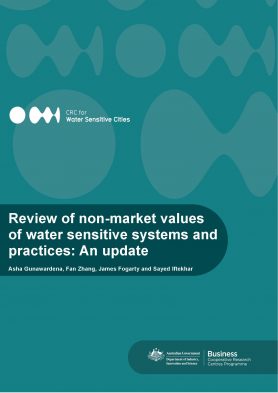Review of non-market values of water sensitive systems and practices: An update
Urbanization is happening at a rapid rate across the world. Current urban areas cover less than 5% of the terrestrial surface. However, if the current trend in population growth continues, it has been predicted that by 2030 urban areas will triple in size; an increase of 1.2 million square kilometres over 2000 (Seto et al., 2012). Globally, more than 50% of the population already live in urban areas, and this proportion will increase substantially. In many developed countries the proportion of the population living in cities is already well about 50%. For example in Australia, the proportion of the population that lives in urban areas is above 80% of the population (Commonwealth of Australia, 2015).
Many Australian cities and towns are facing challenges from population growth and climate change. A growing population puts increasing pressure on the water supply system, as well as on wastewater treatment infrastructure. Supplying additional water is also an increasing challenge due to the rapid decline of some traditional water sources, such as groundwater from over-extraction, and the effects of climate change on dam supply. People’s lifestyle choices are also evolving, and the demand for liveable environments with high amenity services is increasing. Adding to the complexity of the water management context, water authorities and utilities are also facing increasing pressure to improve the efficiency and cost-effectiveness of their investments (Sandhu and Wratten, 2013).
